As the B2B SaaS (Business-to-Business Software-as-a-Service) industry continues to evolve, the pace of innovation and competition is relentless, leading companies to search for ways to maximize revenue growth. One of the best ways that companies are finding to do this is via Revenue Operations, or RevOps for short. So what is B2B SaaS RevOps, and why is it so important to the success of modern businesses? In this comprehensive blog, we will discuss RevOps, what is it, why you need it, the core components of RevOps, and how it can change your B2B SaaS organization. We’ll study some actual use cases of RevOps implementations in the market.
Table of Contents
What is B2B SaaS RevOps?
B2B SaaS RevOps (Revenue Operations) is a framework that aligns the sales, marketing, and customer success teams in the organization to generate more revenue. It is the unification of employees, systems, and software to form an interconnected revenue-generating machine. RevOps is designed to eliminate silos between departments so that all teams are working towards a single common goal: increasing revenue.
RevOps is especially important in the world of B2B SaaS, where the sales process can be lengthy, and retaining customers is vital. But with RevOps B2B SaaS companies have the opportunity for operational closing age through streamlining processes, efficiency improvement, and bottom-line growth.
Why is RevOps Important for B2B SaaS Companies?
1. How Does RevOps Address the Challenges of B2B SaaS?
B2B SaaS solutions have specific obstacles like lengthy sales processes, expensive customer onboarding, and engagement at every step of the customer journey. RevOps solves these problems by creating a cohesive strategy for revenue generation. RevOps brings together sales, marketing, and customer success to minimize friction and improve efficiency by ensuring that these functions are all rowing in the same direction.
2. The Benefits of a RevOps Approach in B2B SaaS
There are several advantages of implementing RevOps in a B2B SaaS company, such as:
Increased Alignment: RevOps aligns all of the departments, mitigating miscommunication, and ensuring that there is cohesion in all the areas working towards the same goals.
Higher Efficiency: RevOps helps organizations work more efficiently by us Dere redundancy and streamlining processes.
Improved Customer Experience: Revenue operations aligned across teams drive a better customer experience because customers experience a consistent path, from acquisition to renewal.
Data-Driven Decision-Making: RevOps uses data and analytics to inform decision-making, allowing companies to identify growth opportunities and optimize their strategies.
Scalability: RevOps creates a scalable structure that allows the company to adapt and expand while maintaining efficiency in revenue operations.
What Are the Key Components of B2B SaaS RevOps?
1. How Does Sales Operations Fit into RevOps?
Sales Operations directly contribute to RevOps by offering the necessary infrastructure and support the sales team requires for success. From managing sales processes and tracking performance metrics to ensuring that the sales team has the tools and resources necessary to close deals. Sales operations in a RevOps framework collaborate with marketing and customer success to ensure the entire revenue cycle is functioning at peak performance.
example: Salesforce is a leading CRM provider that implemented RevOps by bringing together its sales operations with both marketing and customer success. Salesforce helps drive revenue by making sure that every single team is aligned and on the same data with its own CRM platform.
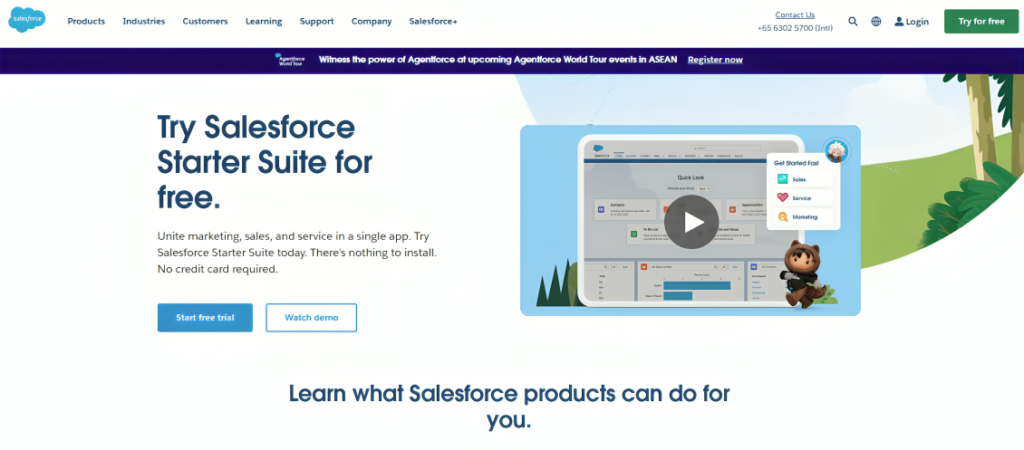
2. Understanding Marketing Operations in RevOps
The above marketing operations provide overall support that helps to enhance marketing strategies and campaigns that result in generating quality leads. Marketing operations within a RevOps model team partner closely with sales and customer success to ensure leads are nurtured and converted to customers properly. This may involve overseeing marketing automation platforms, monitoring campaign performance, and using data analysis to enhance marketing effectiveness.
Example In Real-Time: HubSpot, a leading marketing automation platform, utilizes RevOps to align its marketing operations with sales and customer success. HubSpot uses its marketing automation tools to nurture leads and close them as customers, leading to higher revenue and happier customers.

3. What is The Role of Customer Success in RevOps?
Customer success is an essential part of RevOps as it is focused on customer retention and satisfaction. Customer support chats/mentions create tons of data, especially in a B2B SaaS organization where CSMs are engaged in onboarding new customers, post-purchase maintenance, upselling, cross-selling, etc. Combining the discipline of customer success with the revised RevOps structure helps companies safeguard the engagement and loyalty of customers, over time driving revenue growth.
Real-World Example: Zendesk is an example of a RevOps organization where the customer success team is aligned with sales and marketing. By leveraging its customer service platform, Zendesk provides customers with a seamless support experience throughout their journey, resulting in higher retention rates and increased revenue.
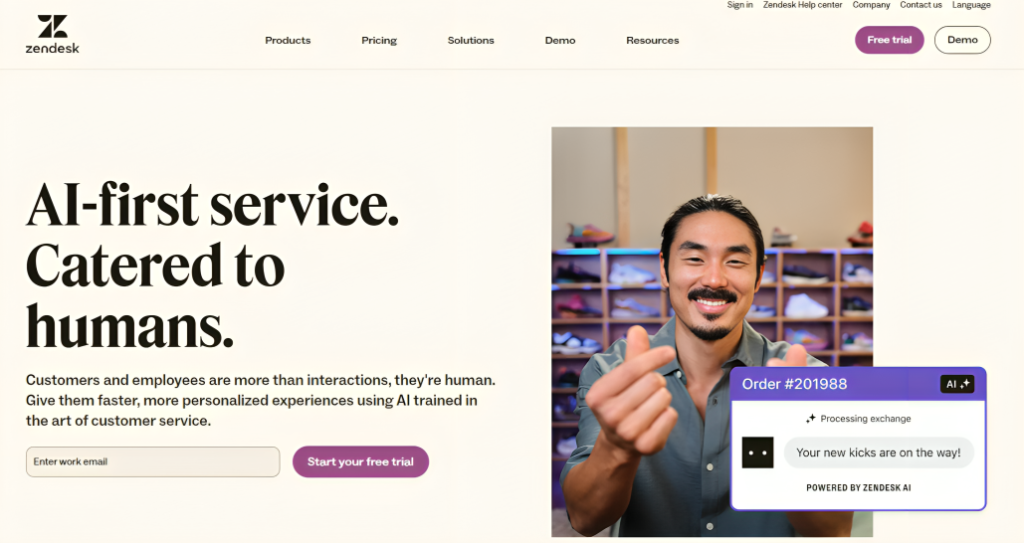
4. What is the Role of Data and Analytics in RevOps?
We would say data and analytics run RevOps since they provide the insight to make informed decisions. Through data from sales, marketing, and customer success, businesses can look for trends, measure their performance, and improve their strategies. RevOps is built on a consolidated data platform, offering a comprehensive perspective of the revenue process, and empowering teams to make informed decisions that fuel growth.
Real-World Example: Tableau, a data visualization tool, leverages RevOps to centralize all data and analytics. Tableau allows its teams to make data-driven decisions by providing a single view of the revenue cycle, leading to greater efficiency and higher revenue.
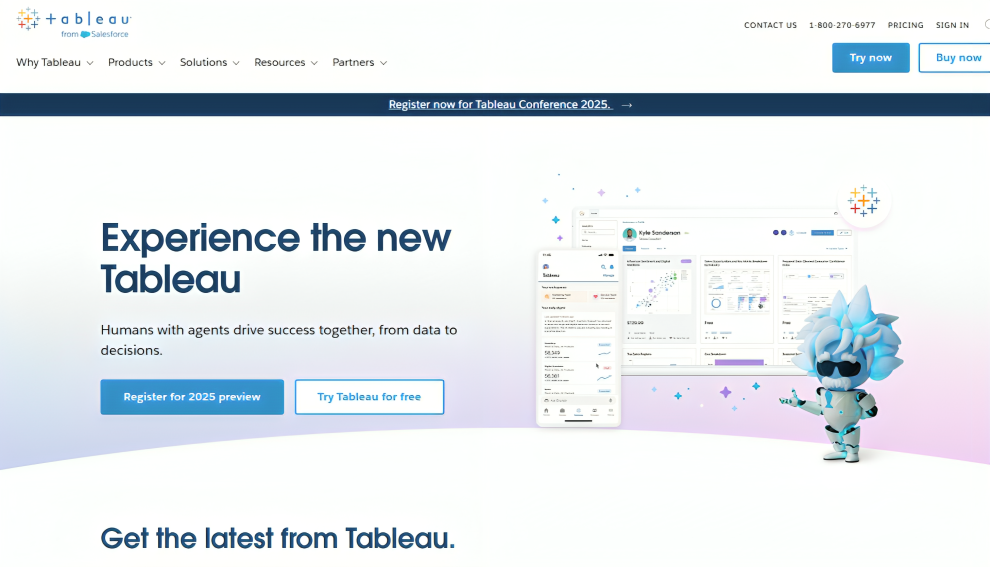
5. How Technology Enables RevOps?
But RevOps needs technology, the right tools and platforms that come together to drive that streamlined operation. Such systems can be customer relationship management (CRM), marketing automation, and analytical systems. Technology is the solution because it helps businesses automate redundancies, track performance indicators, and provide visibility into revenue operations in real-time.
A Real-Time Example: Slack, a communication platform, deploys SaaS RevOps for an integrated technology stack. With all teams on the same platform for internal communication, Slack ensures that everyone has access to the same information, creating a collaborative environment that propels revenue growth.
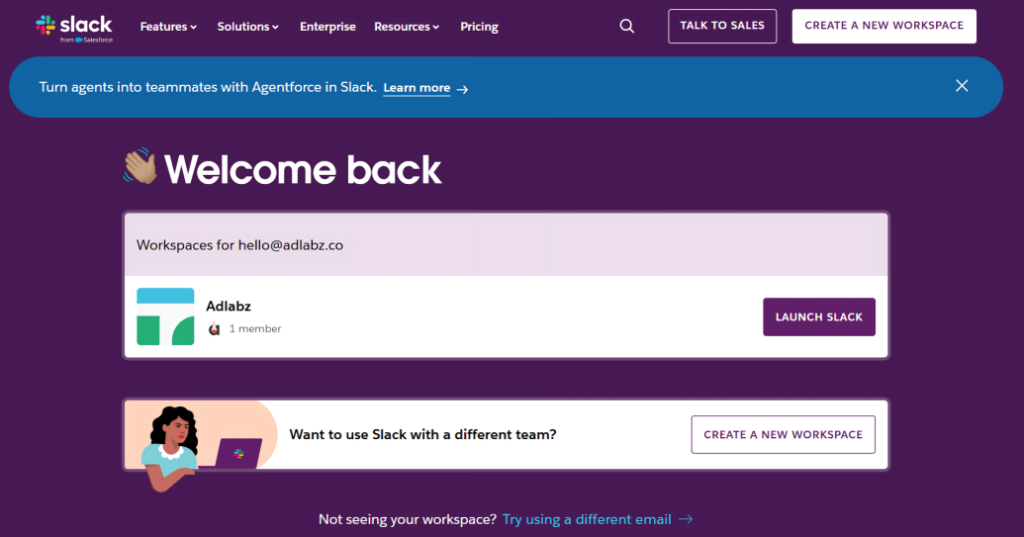
How Does RevOps Transform B2B SaaS Companies?
1. How Does RevOps Improve Cross-Departmental Collaboration?
Improved collaboration between departments is one of the most important ways in which RevOps helps B2B SaaS companies. In traditional organizations, the sales, marketing, and customer success teams often work in isolation, resulting in inefficient processes and miscommunication. RevOps tears down these silos by fostering a collective approach to revenue creation. This can keep all the teams in sync and work towards the same goals, leading to enhanced collaboration and an improved end product.
For instance, a well-known software company — Adobe, has implemented RevOps for better collaboration across departments. By aligning its sales, marketing, and customer success teams, Adobe has been able to drive significant growth by streamlining its revenue operations.
2. How RevOps Improves Customer Experience
RevOps improves the customer experience by ensuring that each customer has a coordinated and seamless experience throughout their entire journey. RevOps aligns sales, marketing, and customer success to lay the foundation for meeting customers where they are in their journey with a business and ensuring that they are nurtured from the time of the first touchpoint to becoming loyal brand advocates. This creates more satisfied customers, higher retention, and ultimately more revenue.
example: Dropbox, a file hosting service leverages SaaS RevOps in streamlining its customer experience. This coordination between the sales and marketing teams throughout the customer journey is key to maintaining consistency in the customer experience and thereby increasing satisfaction and retention.

3. How Does RevOps Drive Revenue Growth?
What is RevOps? RevOps is responsible for managing revenue growth by aligning and optimizing the entire revenue cycle. RevOps does this by aligning sales, marketing, and customer success together, which creates a cohesive approach to nurturing leads, closing deals, and retaining customers. Very importantly, RevOps will use data and analytics to discover growth opportunities and enhance strategies that yield greater revenue and profits.
Example: Zoom Having incorporated RevOps to fuel revenue growth The single-team alignment on the sales, marketing, and customer success sides of Zoom enables Equally efficient revenue cycle optimization: resulting in huge growth!
4. How RevOps Brings Scalability To The Organization
RevOps offers a framework that can scale and adjust with the growth of the company. More revenue operations and complexities as a B2B SaaS company grows SaaS RevOps keeps processes running smoothly and effectively as the company scales. This is critical in consideration for B2B SaaS companies, who must work to remain competitively viable and ensure continued revenue growth.
Example: Shopify, an e-commerce platform, utilizes RevOps for scalability. Shopify is another great example of the successful implementation of RevOps framework that has inline aligned its revenue operations resulting in fast-paced growth.
What Are the Best Practices for Implementing RevOps in B2B SaaS?
1. How to Build a RevOps Team?
The first step to adopting RevOps in a B2B SaaS company is to create a RevOps team. This team would consist of sales, marketing, and customer success representatives, data analysts, and technology experts. The RevOps team should be responsible for owning the entire revenue cycle and ensuring that all departments are aligned and accountable.
Example: Asana, a project management tool, has also developed a dedicated RevOps team to direct its revenue operations. Combining sales, marketing, and customer success and allowing Asana to coordinate teams and produce revenue growth.
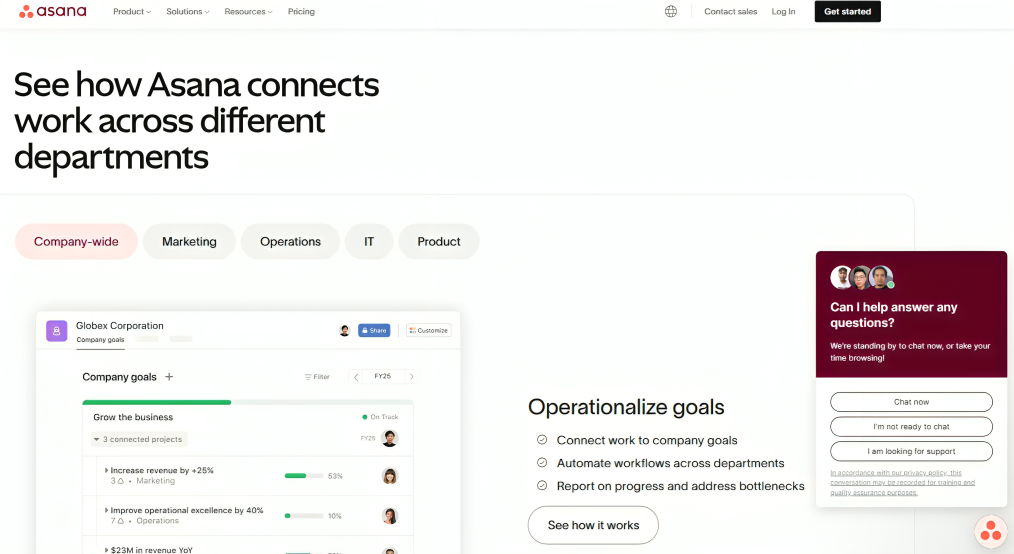
2. What Processes Need Standardization in RevOps?
Standardization of the Processes is the key to RevOps. This encompasses various aspects such as standardizing sales processes, marketing campaigns, and customer success workflows. Standardizing processes ensures consistency and efficiency across all departments. More informative, standardized processes facilitate the tracking of performance metrics and areas of improvement.
Real Life Example: As an example of using the RevOps strategy to standardize processes, the software development company Atlassian. Atlassian is not the only company that has been able to drive revenue growth by standardizing its sales, marketing, and customer success workflows.
3. How to Use Technology as a Friend for RevOps?
Adopt Technology– The backbone of SaaS RevOps is technology. This encompasses tools such as CRM systems, marketing automation software, and reporting tools. These technologies are the foundational tools to help them automate processes, monitor performance, as well as glean insights into the revenue cycle. Moreover, you must have an integrated technology stack that ensures that systems talk to each other and share data seamlessly.
example: Microsoft, a top IT company, uses RevOps to maximize its tech stack. Microsoft has been able to drive growth through a streamlined revenue operation by integrating its CRM, marketing automation, and analytics tools.
4. How to Use Data and Analytics in RevOps?
RevOps is all about data and analytics. Companies must create a centralized data platform that gives a complete view of the revenue cycle. This exercise will need to be done regularly just as this platform needs to be established to keep an eye out for performance key metrics, trends, and decisions based on data. Companies also need to analyze their data periodically to discover new methods of helping them grow and improve their tactics.
Real-Time Example: Google Centralized data and analytics. Google uses RevOps to centralize its data and analytics. Providing a single view of the revenue cycle empowers Google’s teams to make data-driven decisions that drive efficiency and increased revenue.
5. What Steps Can Be Taken to Encourage Collaboration in RevOps?
RevOps is truly collaborative and building that culture is important. This involves fostering open communication between departments, encouraging cross-functional teamwork, and ensuring that all departments are working towards the same company revenue goals. Companies must also furnish training and resources to facilitate the employee comprehension of the significance of SaaS RevOps and how they can play a role in its success.
Real-world example: As part of its RevOps strategy, LinkedIn — a professional networking platform — has built a collaborative culture. Improve Revenue: LinkedIn has attempted to solve this by fostering open communication and cross-functional teams.
What Are the Common Challenges in Implementing RevOps?
1. How to Overcome Resistance to Change?
Resistance to change is one of the most common challenges you see when implementing RevOps. It may also be challenging to get employees to embrace new workflows or technology, especially if they have been used to working in silos. To address this, organizations must see that RevOps is most beneficial, and train, and support employees to transition to this new way of working.
Real Life Example: Salesforce overcame employees’ resistance to change by showing how their work would be better with RevOps, training them on new processes, and giving them the tools they needed to succeed. Much to the surprise of others, Slack has managed to implement RevOps and push revenues to the moon.
2. How to Ensure the Data Accuracy and Consistency?
So, the success of RevOps is based on the reliability and consistency of data. Poor quality, inaccurate, or inconsistent data can cause organizations to make bad decisions and run inefficiently. For the accuracy of data, companies must have clear data governance policies, ensure regular cleansing and updating of their data, and invest in tools that offer real-time data validation.
Real-Time Example: Data Governance in Salesforce Through weeks of making its data clean and up-to-date, Salesforce has been able to use this data to make the right decisions and improve revenue.
3. How Can RevOps Bridge Any Gaps Between Departments?
Because sales, marketing, and customer success teams often have competing priorities and objectives, aligning the organizations around RevOps goals can pose major challenges. Need clear revenue goals, all departments should be aware of how they can help achieve these. It is also important for corporations to continually review performance metrics and provide feedback to ensure all teams are on target.
example: HubSpot Solution, They aligned their departments with RevOps goals by setting clear revenue goals and regularly giving feedback. HubSpot has used this to increase revenue and gain efficiency.
4. How to Measure the Success of RevOps?
Tracking the success of SaaS RevOps is critical for both performance and improvement. Businesses need to establish KPIs (Key Performance Indicators) in accordance with their objective revenue goals CAC (customer acquisition cost), CLTV (Customer Lifetime Value), or revenue growth. Optimize RevOps Strategy — Optimize RevOps strategies based on insights gained from the regular review of KPIs.
Real-Time Example: RevOps KPIs of Zoom show the Success of RevOps Strategy It can optimize its revenue operations and drive growth by constantly analyzing its KPIs.
Conclusions: What Does the Future Hold for B2B SaaS RevOps?
So, B2B SaaS RevOps is a very strong approach for the alignment of efforts that can change the revenue generation process of the respective companies. RevOps creates a frictionless revenue-generating machine by aligning sales, marketing, and customer success. RevOps is likely to become an important function that will continue to play a significant role in the B2B SaaS industry’s ongoing evolution.
While RevOps will always come with its challenges, the right strategies and tools can help companies overcome these hurdles and reap the benefits of a unified revenue operations approach. In short, by strengthening SaaS RevOps teams, having consistent processes, technology adoption, and collaborative culture, B2B SaaS companies will be able to unlock their full potential and achieve sustainable revenue growth.
The former deals with leveraging technology and automation to scale revenue, and the latter is about ensuring that this growth is founded on a solid bedrock of data-driven decision-making and consistent improvements in operational efficiency. With an increasing awareness of RevOps in companies, we can expect it to become a mainstream practice in the B2B SaaS landscape, helping them achieve more to innovate, become efficient, and drive growth. It does not matter if you are a fledgling startup or a well-established enterprise, the time for RevOps is now, and advancing your revenue operations is on the table.
Final Thoughts:
B2B SaaS RevOps is the future. RevOps simplifies operational processes in the organization and helps make them more effective leading to an increase in sales. This blog highlights some real-time examples of how top companies are leveraging SaaS RevOps and reaping its benefits. As the B2B SaaS industry continues to evolve, the role of RevOps in helping companies remain competitive and achieve long-term success will only grow in importance.
You might also be interested:


